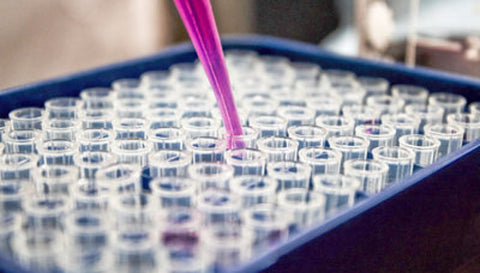Purifying Biosimilars

This blog post is the fourth in a series that spotlights proteins that have been purified by the CL7/Im7 system. Read the third about purifying membrane proteins here.
Biosimilars are functionally significant proteins with therapeutic potential. When expressing proteins in E. coli that are non-native to bacteria, there is potential for toxicity, misfolding, and aggregation of the protein at high concentrations. This blog post highlights the purification of several biosimilar proteins using the CL7/Im7 system.
Purifying biosimilars
Assuming these proteins have no confounding elements such as hydrophobic patches or nucleic-acid affinity, they can be purified by nearly identical protocols. Disulfide bonds can cause protein misfolding in E. coli and therefore cause some proteins to be insoluble without the presence of a solubility tag. The addition of tags such as thioredoxin (Trx) and SUMO can help stabilize and solubilize the target protein. Without a solubility tag, these proteins would be present as inclusion bodies.
One consideration when purifying biosimilars is the need for a fully native protein. This means cleaving any affinity tags that were used for stability or expression. The solubilizing SUMO domain is ideal for removal purposes. SUMO protease recognizes the tertiary structure of the domain instead of a specific sequence, therefore cleaving without leaving any amino acid residues behind. Avoiding immunogenic effects caused by leftover sequences or fragments is crucial if the protein is to be used in in vivo biological studies or developed into drugs for the treatment of disease.
Biosimilars purified using CL7/Im7
TriAltus purified five biologically relevant proteins using the CL7/Im7 system to show that it’s capable of producing research-quality protein products. These small-scale purification runs produced 98-99% purity and yields of 10-24 mg protein/g cells.
HIV Nef protein (MW: ~25 kDa) is a key component of HIV infection (Figure 1A).
Human growth hormone (hGH) (MW: ~22.1 kDa) is used to treat hGH deficiency and stimulates weight gain. The protein has two internal disulfide bonds (Figure 1B).
Human Interferon ɑ (IFN-ɑ) (MW: ~19.2 kDa) is used in clinical settings for the treatment of viral infections and certain cancers. IFN-ɑ contains two internal disulfide bonds (Figure 1C).
Granulocyte-Colony Stimulating Factor (GCSF) (MW: ~18.7 kDa) is used clinically to reduce infection risk after some types of cancer treatment. GCSF contains two internal disulfide bonds (Figure 1D).
Human Antibody Invariable Region (Fc) (MW: ~26.1 kDa) is the constant region of an antibody that allows it to interact with cell surface receptors and trigger an immune response. Fc contains four internal disulfide bonds and two intermolecular disulfide bonds that mediate dimer formation (MW: ~ 52.1 kDa) (Figure 1E).

Conclusion
In the purification of biosimilar proteins, it is critical to use a strategy that will result in a highly pure, natively folded product. Creating pure and active biologically relevant proteins at high yield can help the drug research and discovery process progress faster and with fewer off-target effects.
Read in more detail about how to purify other soluble proteins in the other soluble proteins protocol.
